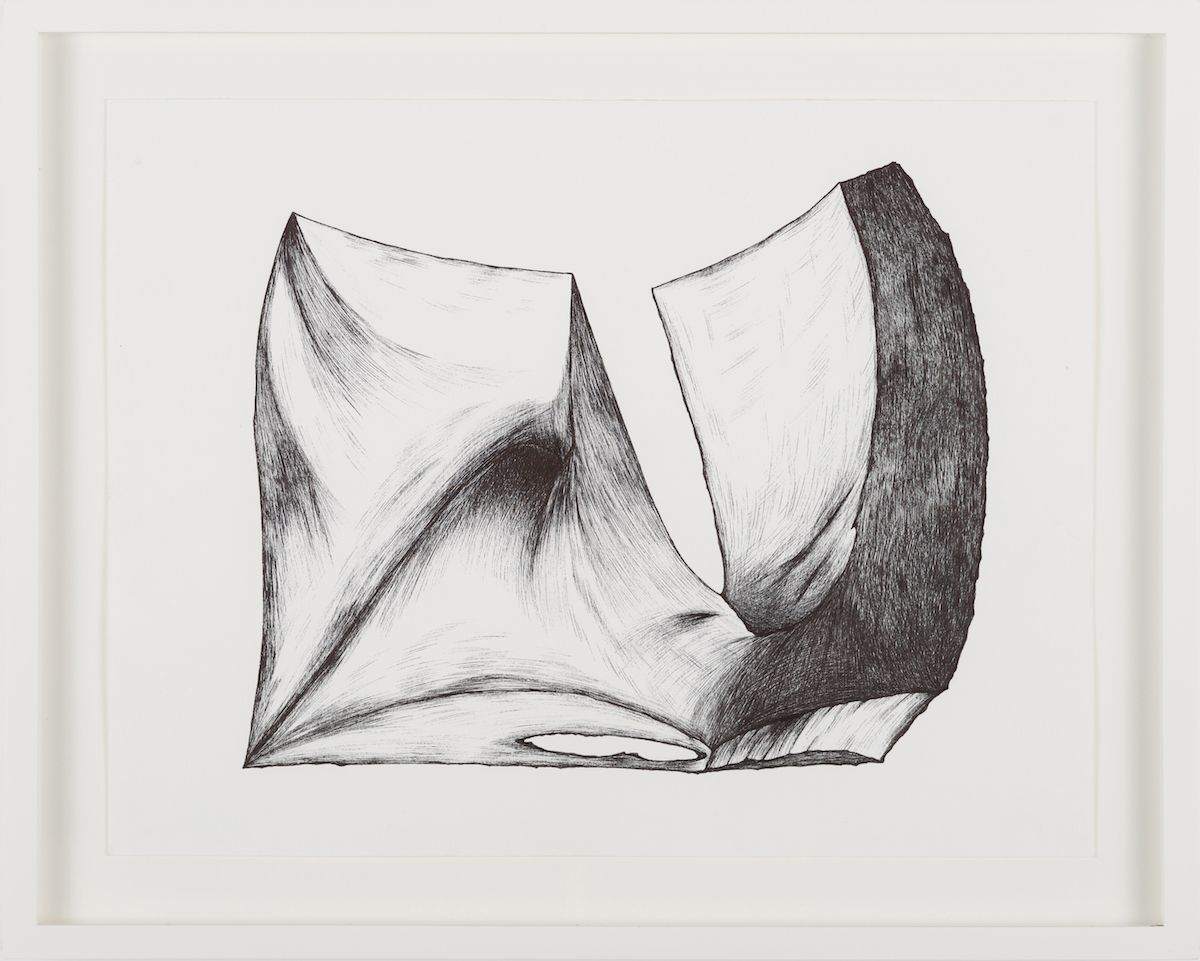Emre Hüner
Joanna Rajkowska
Salt Ulus
September 22 – November 12, 2016
The exhibition opens with a selection of ceramic sculptures by Emre Hüner from his work Perpetual Island Infinite Vehicle (2015) along with his drawing series The Shrine of the Post-Hypnotic (2012). Hüner’s works often refer to symptoms of modern industrial decay, dystopian realms and forms of archaeology, to imagine the dimensionless environments and conflicted relics of floating times and geographies. His recent ceramic sculptures are imbued with a subtle tension between their exquisitely rendered surface textures and the rough uninhabitable geographies they allude to. Each suggests a speculative topography and a seductive yet concerning barren premonition of what is to come; the forms feel familiar but at the same time defy definition.
In a similar way, a strata of Rajkowska’s practice depicts landscapes that hold no clear place, yet share historical gravity as witnesses to unknown crimes. A central work in the exhibition is Props found at Zazadin Han, a series of photographs of dumped scenographies that the artist discovered in Zazadin Han in Konya in 2009. She dragged them out into the landscape, one by one, in order to focus on the signification these temporary theatrical mockups’ may hold. Another photographic series, Future Imperfect, taken the same year, records the haunting states of unfinished structures encountered around Konya. They are, for Rajkowska, not only emblems of the country’s failed dreams of modernization, but also examples of how man-made artefacts are ultimately in the possession of the forces of nature.
The issues of failure, mutation or the phenomena of uncontrollable error can also be understood as potencies for development. These buildups of evolutionary layering within life are expressed by Rajkowska in a set of neon sculptures, where the tension between the natural world and the synthetic, merge in a palimpsest of materials, texture and language.
With ambiguity and doubt common denominators within the exhibition, the video Forcing a Miracle (2012) and the wallpaper Sumpfstadt (Swamptown) (2012) suggest treatments of the landscape that blur the image of reality, by proposing rehabilitating monuments. Intended as a permanent intervention, Sumpfstadt was to be a project of habitat that would delegate history to non-human forces. As in her photographic works, Rajkowska acknowledges the landscape as a site of past crimes, where humans have mediated and applied politicizing subjectivities. Yet, her aim with Sumpfstadt was to attempt a form of regeneration, an “impossible monument,” in that it would be left untouched, to return to its pre-human condition.
Joanna Rajkowsk’s participation is supported by Culture.pl.

In a similar way, a strata of Rajkowska’s practice depicts landscapes that hold no clear place, yet share historical gravity as witnesses to unknown crimes. A central work in the exhibition is Props found at Zazadin Han, a series of photographs of dumped scenographies that the artist discovered in Zazadin Han in Konya in 2009. She dragged them out into the landscape, one by one, in order to focus on the signification these temporary theatrical mockups’ may hold. Another photographic series, Future Imperfect, taken the same year, records the haunting states of unfinished structures encountered around Konya. They are, for Rajkowska, not only emblems of the country’s failed dreams of modernization, but also examples of how man-made artefacts are ultimately in the possession of the forces of nature.
The issues of failure, mutation or the phenomena of uncontrollable error can also be understood as potencies for development. These buildups of evolutionary layering within life are expressed by Rajkowska in a set of neon sculptures, where the tension between the natural world and the synthetic, merge in a palimpsest of materials, texture and language.
With ambiguity and doubt common denominators within the exhibition, the video Forcing a Miracle (2012) and the wallpaper Sumpfstadt (Swamptown) (2012) suggest treatments of the landscape that blur the image of reality, by proposing rehabilitating monuments. Intended as a permanent intervention, Sumpfstadt was to be a project of habitat that would delegate history to non-human forces. As in her photographic works, Rajkowska acknowledges the landscape as a site of past crimes, where humans have mediated and applied politicizing subjectivities. Yet, her aim with Sumpfstadt was to attempt a form of regeneration, an “impossible monument,” in that it would be left untouched, to return to its pre-human condition.
Joanna Rajkowsk’s participation is supported by Culture.pl.
![3 Joannarajkowska 2009 Zazadin Hanxi Joanna Rajkowska
<i>Props found at Zazadin Han</i> [Zazadin Hanı’nda buluntu dekor], XI
2009
Żak | Branicka, Berlin ve l'étrangère, Londra izniyle](/directus/media/thumbnails/3_joannarajkowska_2009_zazadin-hanxi-1-jpg-1200-1200-false.jpg)


